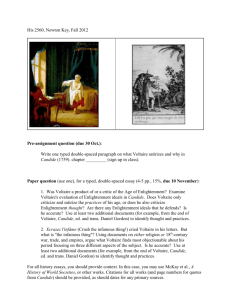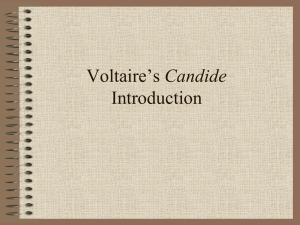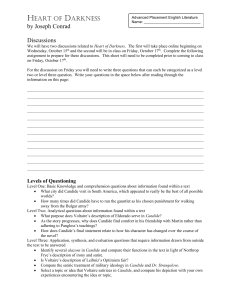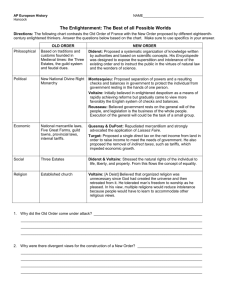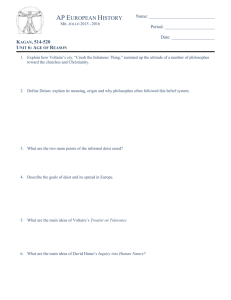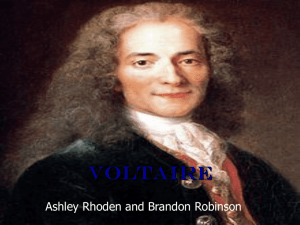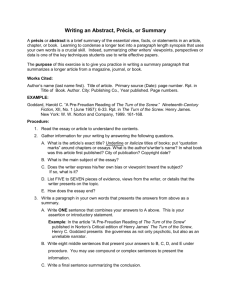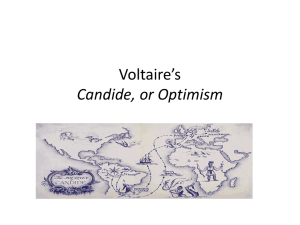File
advertisement
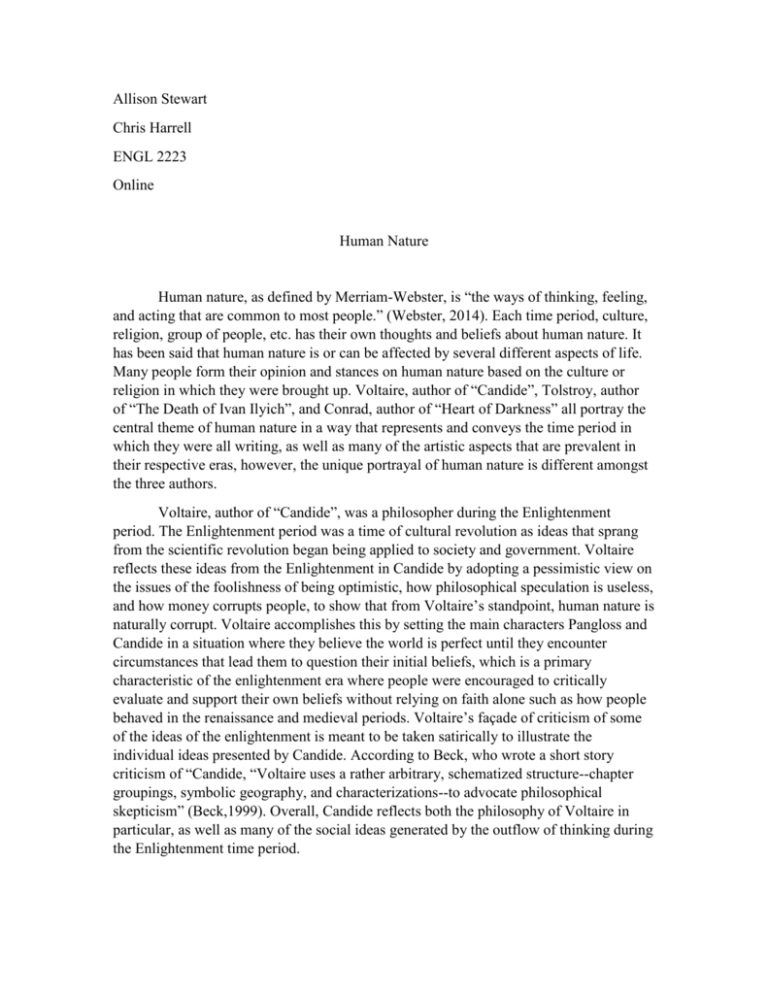
Allison Stewart Chris Harrell ENGL 2223 Online Human Nature Human nature, as defined by Merriam-Webster, is “the ways of thinking, feeling, and acting that are common to most people.” (Webster, 2014). Each time period, culture, religion, group of people, etc. has their own thoughts and beliefs about human nature. It has been said that human nature is or can be affected by several different aspects of life. Many people form their opinion and stances on human nature based on the culture or religion in which they were brought up. Voltaire, author of “Candide”, Tolstroy, author of “The Death of Ivan Ilyich”, and Conrad, author of “Heart of Darkness” all portray the central theme of human nature in a way that represents and conveys the time period in which they were all writing, as well as many of the artistic aspects that are prevalent in their respective eras, however, the unique portrayal of human nature is different amongst the three authors. Voltaire, author of “Candide”, was a philosopher during the Enlightenment period. The Enlightenment period was a time of cultural revolution as ideas that sprang from the scientific revolution began being applied to society and government. Voltaire reflects these ideas from the Enlightenment in Candide by adopting a pessimistic view on the issues of the foolishness of being optimistic, how philosophical speculation is useless, and how money corrupts people, to show that from Voltaire’s standpoint, human nature is naturally corrupt. Voltaire accomplishes this by setting the main characters Pangloss and Candide in a situation where they believe the world is perfect until they encounter circumstances that lead them to question their initial beliefs, which is a primary characteristic of the enlightenment era where people were encouraged to critically evaluate and support their own beliefs without relying on faith alone such as how people behaved in the renaissance and medieval periods. Voltaire’s façade of criticism of some of the ideas of the enlightenment is meant to be taken satirically to illustrate the individual ideas presented by Candide. According to Beck, who wrote a short story criticism of “Candide, “Voltaire uses a rather arbitrary, schematized structure--chapter groupings, symbolic geography, and characterizations--to advocate philosophical skepticism” (Beck,1999). Overall, Candide reflects both the philosophy of Voltaire in particular, as well as many of the social ideas generated by the outflow of thinking during the Enlightenment time period. In “The Death of Ivan Ilych” by Leo Tolstoy, on the other hand takes a much different approach to human nature. Tolstoy forms a dualistic approach to the topic of human nature by explaining that everyone follows one of two different types of lifestyles. They either choose the artificial life that is ultimately unfulfilling and shallow and not capable of answering life’s most difficult questions, or they choose the authentic life, which has a place for pity, compassion and understanding and prepares one for their own mortality as well as life’s other complex questions. The author uses the characters Ivan, praskovya, and Peter to illustrate the artificial life, and then uses Gerasim to represent the authentic life. As the story continues, the author shows Ivan Ilyich’s realization of both sides of the approach to life. Ilyich lives his life in the artificial lifestyle trying to evade his own end, but then once he gets sick, starts suffering from a reoccurring dream where he is falling into a black bag, but never manages to fall through, and his relationship with Gerasim develops he begins to realize that there is a whole other side of life, the authentic lifestyle, that holds more meaning and true friendships and relationships, and ultimately prepares him to meet death. Ilyich goes through a battle within himself of exploring one side of life to his own ways of living. According to Angela Frattarola, critic of “The Death of Ivan Ilyich “It is within this context that Ivan Ilyich ascertains that he most definitely did not live his life as he should have and gets “the sensation one sometimes experiences in a railway carriage when one thinks one is going backwards while one is really going forwards and suddenly becomes aware of the real direction. ‘ “ (Frattarola, 2002) . This dualist approach to human nature reflects the revolutions occurring in the world during the time Tolstoy wrote The Death of Ivan Ilych because he shows the people pick only one side to stand behind and that ultimately one side is correct and the other is wrong. Finally, “Heart of Darkness” by Joseph Conrad takes a cause and effect approach to Human nature. Conrad displays his theme as the conditions necessary to bring out the natural part of a person. He uses the topic of imperialism to show how it leads a person into madness by matter-of-factly describing the scenes of harsh cruelty and near slavery only to show that the means do not equal the ends of the ivory trade. This particularly indicates the artistic concepts of the end of the romantic time period and post-colonialism because it is an example of the vivid sense experiences indicative of the era. In Heart of Darkness, Conrad spends many words on describing the experience the savages and the Europeans went through. During the time period that Conrad was writing in, artist, writers, creative people in general strived to paint a picture through their words or to tell a story through their paintings. Also, during this time period artists expressed themselves in a very exaggerative way; going into great vivid, graphic detail about experiences within their works. According to Thomas Loe, “Countering the disjointed perspectives and the lack of a clearly established plot is Conrad's image-laden style, which helps create visual impressions and works to establish an allegorical or fablistic framework with primordial and natural dimensions of order such as the cycles of history and the turnings of the tide.” (Loe, 1991). In writing in such great and long detail, Conrad achieves this as he paints a picture in the readers mind, and makes the reader feel as if they had actually experienced the same situations as his characters. Candide, The death of Ivan Ilych, and Heart of Darkness all three explore the aspects of the human personality that are innate at birth, however they describe them in different ways. Voltaire takes a pessimistic view to indicate the negatives of human nature in response to all the optimistic concerns in the Enlightenment time period in which he lived. Leo Tolstoy takes a dualist approach that stems from all the divisions in two sides that he saw in the revolutionary time period. Meanwhile, Joseph Conrad uses a vividly extreme but cruelly realistic cause and effect relationship, which is characteristic to the romantic art movement and the post-Colonial time period.
